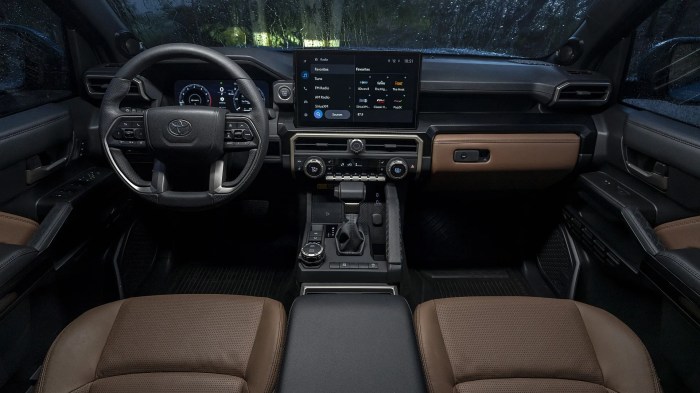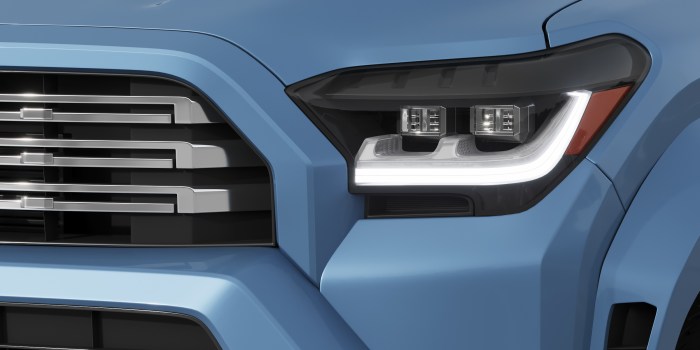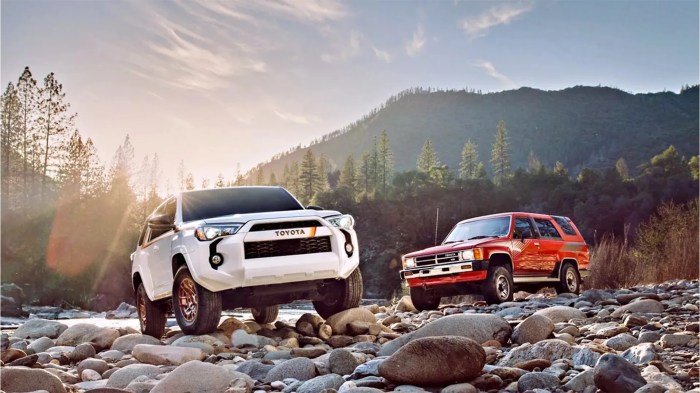The Toyota 4Runner, a rugged SUV known for its off-road capabilities, also boasts a comprehensive suite of safety features designed to protect its occupants and others on the road. While specific features may vary slightly depending on the trim level and year, this article provides a detailed overview of the safety technologies you can expect to find in a 2025 4Runner, highlighting key advancements and considerations.
Toyota Safety Sense™ 2.5 (TSS 2.5): The Foundation of 4Runner Safety
At the heart of the 4Runner’s safety system is Toyota Safety Sense™ 2.5 (TSS 2.5), a comprehensive suite of driver-assistance technologies. This package typically includes:
Pre-Collision System with Pedestrian Detection:
This system uses radar and camera technology to detect potential collisions with vehicles or pedestrians. If a collision is imminent, it provides audible and visual warnings, and may even automatically apply the brakes to help mitigate the impact or avoid the collision altogether. This is crucial for navigating busy city streets and unpredictable off-road environments.

Source: topspeedimages.com
Lane Departure Alert with Steering Assist:
Lane Departure Alert (LDA) monitors lane markings and alerts the driver if the vehicle begins to drift from its lane unintentionally. Steering Assist can provide gentle corrective steering input to help guide the vehicle back into the lane, enhancing safety, especially during long drives or moments of driver inattention.
Full-Speed Range Dynamic Radar Cruise Control (DRCC):
DRCC maintains a pre-set following distance from the vehicle ahead, automatically adjusting speed to maintain that distance. This feature is particularly helpful in reducing driver fatigue on long highway journeys, promoting smoother driving, and improving overall safety.
Automatic High Beams (AHB):
AHB automatically switches between high and low beams, optimizing visibility at night without blinding oncoming drivers. This improves nighttime visibility and reduces eye strain for the driver.
Road Sign Assist (RSA):
RSA utilizes a camera to detect and display common road signs like speed limits and stop signs directly on the instrument panel. This helps drivers stay informed about traffic regulations and maintain safe driving speeds.
Beyond TSS 2.5: Additional Safety Features in the 2025 4Runner
In addition to TSS 2.5, the 2025 4Runner likely incorporates other advanced safety features, depending on the trim level. These may include:
Blind Spot Monitor (BSM) with Rear Cross-Traffic Alert (RCTA):
BSM uses sensors to detect vehicles in your blind spots, alerting you with visual warnings on the side mirrors. RCTA adds an alert when backing out of a parking space, warning of approaching vehicles from either side. This is particularly beneficial in crowded parking lots and busy intersections.
Star Safety System™:
Toyota’s Star Safety System™ is a standard feature across many of their vehicles, including the 4Runner. This system typically comprises:
- Anti-lock Brake System (ABS): Prevents wheel lockup during braking, allowing for better steering control.
- Electronic Brake-force Distribution (EBD): Optimizes braking force to each wheel, enhancing stability during braking.
- Brake Assist (BA): Provides extra braking force in emergency situations.
- Vehicle Stability Control (VSC): Helps maintain control during slippery conditions or sudden maneuvers.
- Traction Control (TRAC): Prevents wheel spin, improving traction on slippery surfaces.
Ten Airbags:
Many 4Runner models offer comprehensive airbag protection, potentially including front, side, curtain, driver’s knee, and passenger airbags. This multi-layered airbag system aims to protect occupants in a variety of collision scenarios.
Advanced Safety Features (Depending on Trim):
Higher trim levels might include features like a 360-degree camera system providing a comprehensive view around the vehicle, enhancing parking safety and off-road awareness. Adaptive headlights may also be available, adjusting their beam pattern based on driving conditions and steering input.
Off-Road Safety Considerations for the 4Runner
The 4Runner’s off-road capabilities necessitate consideration of specific safety aspects:
Crawl Control:
This low-speed off-road cruise control helps maintain slow, steady progress on challenging terrain, minimizing the risk of loss of control.
Multi-Terrain Select (MTS):
MTS adjusts vehicle settings to optimize traction on different surfaces like mud, sand, rock, and dirt, enhancing stability and safety in diverse off-road conditions.
Downhill Assist Control (DAC):
DAC helps maintain vehicle speed and stability when descending steep inclines, reducing the risk of runaway descents.
Frequently Asked Questions (FAQ)
- Q: Does the 2025 4Runner have automatic emergency braking? A: Yes, the Pre-Collision System with Pedestrian Detection included in TSS 2.5 provides automatic emergency braking functionality.
- Q: What is the difference between VSC and TRAC? A: VSC (Vehicle Stability Control) helps maintain control during slippery conditions or sudden maneuvers, while TRAC (Traction Control) prevents wheel spin to improve traction.
- Q: Are all safety features standard across all 4Runner trims? A: No, some advanced safety features like a 360-degree camera system or adaptive headlights may only be available on higher trim levels.
- Q: How reliable are the safety features in the 4Runner? A: Toyota has a strong reputation for vehicle reliability, and its safety systems are generally considered to be well-engineered and effective. However, no system is foolproof, and responsible driving practices remain crucial.
- Q: Where can I find more detailed information about specific safety features? A: Consult the official Toyota website or your local Toyota dealership for the most up-to-date and detailed specifications for the 2025 4Runner.
References:
For more information on Toyota Safety Sense, please visit the official Toyota website: [Insert Toyota Safety Sense webpage link here]
For detailed specifications on the 2025 Toyota 4Runner, consult your local Toyota dealership or the official Toyota website: [Insert Toyota 4Runner webpage link here]
Conclusion:
The 2025 Toyota 4Runner offers a robust package of safety features designed to protect its occupants and others on the road, both on and off the pavement. While the specific features may vary depending on the trim level, the combination of TSS 2.5, the Star Safety System™, and additional advanced safety options provide a strong foundation for confident and safe driving.
Remember to always prioritize safe driving practices, regardless of the technological advancements in your vehicle.
Call to Action:
Visit your local Toyota dealership today to experience the 2025 4Runner’s impressive safety features firsthand and schedule a test drive!

Source: zifir3d.com
Query Resolution
What are the key driver-assistance features in the 2025 4Runner?
Likely features will include adaptive cruise control, lane departure warning, automatic emergency braking, and potentially blind-spot monitoring.
Does the 2025 4Runner have airbags beyond the standard front airbags?

Source: topspeedimages.com
Expect side curtain airbags and possibly knee airbags for enhanced protection in a collision.
How does the 4Runner’s safety rating compare to competitors?
Specific ratings won’t be available until closer to the 2025 release date, but Toyota typically aims for high safety scores from organizations like the IIHS and NHTSA.
Are there any optional safety packages available for the 2025 4Runner?
Toyota may offer optional packages bundling additional safety technologies for a higher price point.
